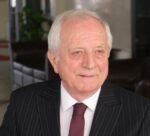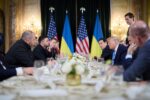In the Santa Marta guesthouse of the Vatican—the official papal residence—a red ribbon and wax seal were placed on the doors just hours after Pope Francis passed away from a stroke. The Catholic Church is now preparing for the funeral of a pope remembered in history as “the Pope of the Poor.”
Just as he lived and led the Church with humility, Pope Francis will be buried with humility—under a newly simplified ritual that he himself inaugurated. His funeral is expected to take place 4 to 6 days after his death, in St. Peter’s Square. A similar timeframe was followed for Pope John Paul II, who died on April 2, 2005, and was buried on April 8.
While details of the funeral remain limited, it is known that a large number of world figures will be in attendance. Foremost among them is U.S. President Donald Trump and First Lady Melania. “Melania and I will be present at the funeral of Pope Francis in Rome. We are looking forward to being there,” Trump wrote, having previously voiced strong support for Catholics.
Also expected is U.S. Vice President J.D. Vance, a Catholic convert who had met the Pope just one day before his passing, during his stay in the Vatican since Good Friday. Among the last to meet the ailing 88-year-old pope was King Charles of the United Kingdom, accompanied by Queen Camilla. However, they are not expected to attend the funeral in person. Instead, Prince William is likely to represent the British royal family, joining other royals, heads of state, and religious leaders from around the world.
Thousands of mourners have already gathered in St. Peter’s Square—the site of Pope Francis’s final public appearance, where he shouted “Viva il Papa” just 19 hours before his death. The funeral will most likely take place midweek.
Prior to the funeral, the Pope’s body will lie in state for three days inside St. Peter’s Basilica. Regardless of where a pope dies, his funeral traditionally takes place in Vatican City, weather permitting. A massive security operation will be underway during the funeral. For comparison, some 4 million mourners attended the funeral of Pope John Paul II, supported by 8,000 security personnel, including 2,000 uniformed police and 1,400 in plainclothes.
The Swiss Guard—charged with papal protection since 1506—will kneel in reverence, blessing the bread and wine, which according to Catholic tradition, become the body and blood of Christ. A homily will reflect on the Pope’s life, though officially, this ceremony is not termed a “funeral.”
The ritual will follow tradition, though modified by Pope Francis himself, who advocated a simplified version. “The funeral of the Roman Pontiff is that of a shepherd and disciple of Christ—not a man of worldly power,” explained Archbishop Diego Ravelli, Vatican liturgy chief. Francis had repeatedly urged for simpler rites that reflect the Church’s faith in the risen Christ.
The funeral mass will last about two and a half hours and will largely follow the conventional Latin Catholic rite, with the addition of papal-specific elements.
The burial will be conducted by the Dean of the College of Cardinals, currently Cardinal Giovanni Battista Re, aged 91. Assisting will be Cardinal Leonardo Sandri of Argentina, 81. All 252 cardinals are expected to attend.
After the ceremony, the Pope’s body will be carried through the “Door of Death” to the left of the altar in St. Peter’s, as a 10-ton funeral bell tolls. Hymns from Psalms 117 and 41 will be sung, including “Open for me the gates of righteousness” and “In the glorious company of the saints, I will enter the house of God.”
In a break from recent tradition, Pope Francis requested to be buried at the Basilica of Saint Mary Major, citing his deep personal connection to the ancient church outside the Vatican walls. Ultimately, however, the decision lies with the cardinals—just as Pope John Paul II’s wish to be buried in Poland was not honored.
Roughly 15–20 days after Pope Francis’s death, the Conclave will be convened (from con clave—Latin for “with a key,” a reference to Pope Gregory X’s 1274 decree that cardinals be locked in until a decision is made). Up to 120 cardinals under the age of 80 will vote, remaining in the Sistine Chapel until white smoke emerges from the chimney to announce: Habemus Papam — “We have a Pope.”







